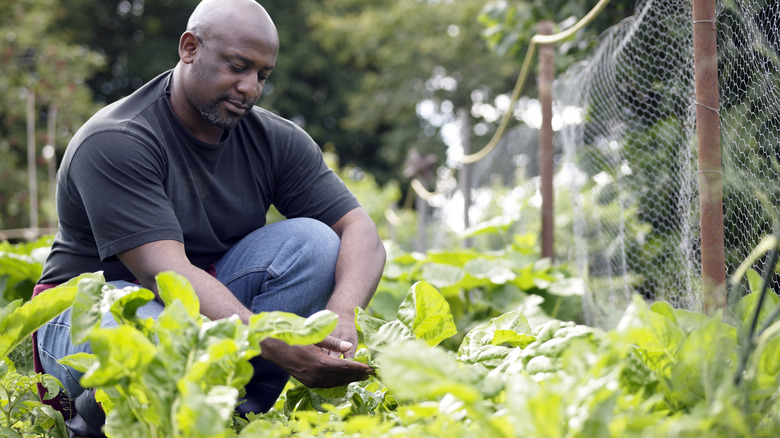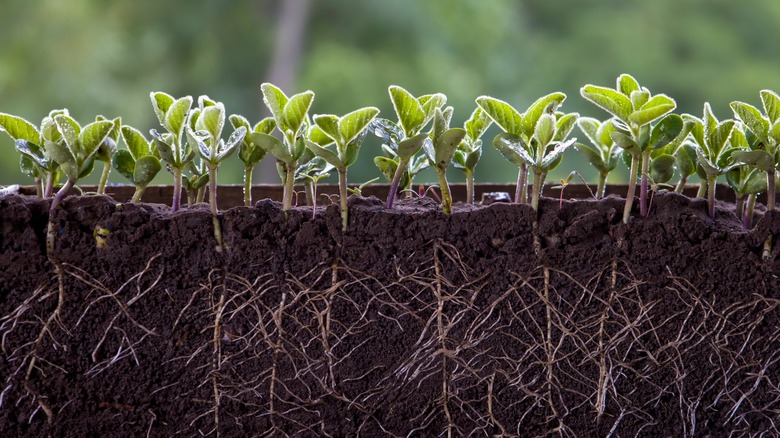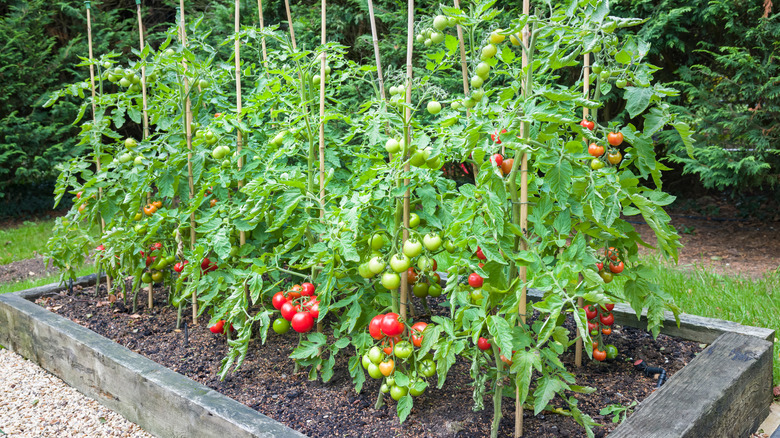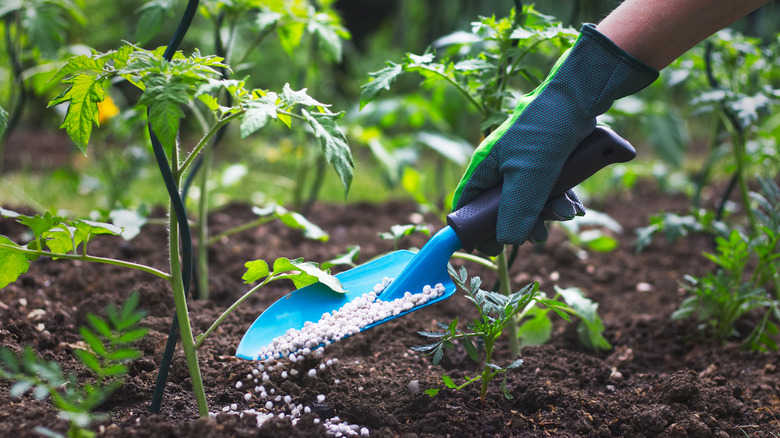What Is NPK Fertilizer And Why Is It Important For Keeping Your Plants Healthy?
We may receive a commission on purchases made from links.
It seems like there is a specialty fertilizer for everything. When you visit the fertilizer aisle at the garden center, you'll find different options for cacti, orchids, African violets, and many others. Of course, the reason is obvious: Different plants have particular needs. For instance, some need more nitrogen, while others suffer from too much. Unless you're an orchid farmer, you probably don't need specialty plant food in large quantities. However, when shopping at the garden center, you're bound to see large bags of NPK fertilizer, which is popular amongst gardeners since it offers three nutrients that are considered the primary macronutrients for plants. However, the specific product you buy depends on the kind of growth you want to encourage.
Often referred to as 10-10-10 (or other numerical arrangements based on its constituent parts), the numbers on the bag refer to specific nutrients. The first number refers to the amount of nitrogen in the fertilizer mix, while the second and third numbers refer to phosphorous and potassium, respectively. An easy way to remember which number is which is to keep in mind that they are listed alphabetically.
While 10-10-10 is a standard balance of nutrients, Alaska Fish Fertilizer is 5-1-1. That means this product has five parts nitrogen to one part of both phosphorous and potassium. This matters because you always want to select a mixture that is tailor-made to suit the needs of your garden.
Nitrogen
Nitrogen is the primary nutrient responsible for helping a plant conduct photosynthesis, which ensures there is food available for it to thrive. Because nitrogen is responsible for keeping a plant fed, it is widely considered the most important nutrient. Although nitrogen is found throughout the plant, a large amount exists in its chlorophyll, the part that turns leaves green and converts sunlight into sugars.
Because nitrogen is so prolific in the leaves of green cultivars, having a sufficient amount in the soil encourages the growth of leaves. While a good balance of nitrogen is necessary, this is not a situation where "if some is good, more is better." Too much of this nutrient in the soil can cause plants like tomatoes and beans to grow large and look healthy, but the imbalance of nutrients can greatly reduce fruit production. One sign of a lack of nitrogen is the yellowing of leaves.
Phosphorus
Like nitrogen, phosphorous is found throughout the body of a plant, but its primary function is to promote healthy root development. The foundation of a healthy plant is a well-established root system. Since the roots are responsible for taking up nutrients and water from the soil, a plant simply cannot grow and thrive without them. Sufficient available phosphorous in the soil allows the root system to grow strong and healthy, making for hardier growth while being less susceptible to pests and disease issues. Also, the deeper the roots go, the more drought-tolerant your garden will be.
There are several signs to look for when checking for phosphorus deficiency. Sometimes the leaves of early and late crops will take on a purplish hue when the soil is too cold, making phosphorus temporarily unavailable. Even if there is enough of this nutrient in the ground, you may see signs of deficiency, but wait until the soil warms and see if the plants regain their normal coloring before fertilizing. If you are still seeing this discoloration, you may want to add some phosphorous. Another sign your soil is deficient is if your plants look stunted and fail to thrive when the weather is right. Without those healthy roots, optimal growth is unlikely.
Potassium
Potassium is the second most important nutrient for a plant after nitrogen. Like all macro and micronutrients, potassium is used throughout the plant, but by far, its most important job is aiding in producing flowers and fruit. It also regulates a process called turgor pressure, which ensures there is enough water pressure within a plant's cells to keep the cells full and the plant upright. No one wants a floppy plant.
Because potassium helps regulate the movement and pressure of water and sugars, it is directly related to the reproductive process that produces healthy flowers and fruit. While you do not have to have a biology degree to grow a good tomato, what you do need to know is that your garden's tomatoes will not be viable without the right amount of potassium available in the soil. Slow plant growth and droopy, yellowing leaves are some signs of potassium deficiency.
Use NPK fertilizer responsibly
When looking into fertilizer and what each nutrient does, it is easy to get lost in the science of it all. Although it may interest some, most of us just want to know how to keep our lawns and gardens healthy. Since each of these macronutrients has a specific purpose, the best way to know that your soil has everything it needs is to get a soil test. There are DIY kits available at most garden centers, or you may be able to get a free or inexpensive soil test at your local extension office. Once you know what your soil does and does not need, you can adjust your fertilization process accordingly.
Here's another takeaway if you are trying to remember which nutrient serves what primary function. While the nutrients on the bag are alphabetical, their functions are in reverse alphabetical order: Nitrogen is for shoots, phosphorus is for roots, and potassium is for fruits. So, those numbers on the bag represent, in order, "shoots, roots, fruits." If you memorize this and mumble it to yourself while you're shopping, we doubt anyone will judge — chances are, they're trying to remember it, too!




